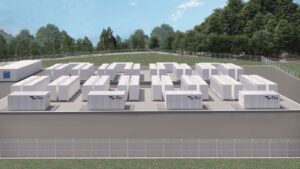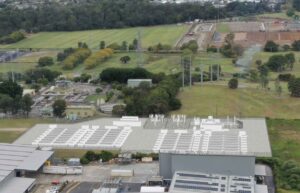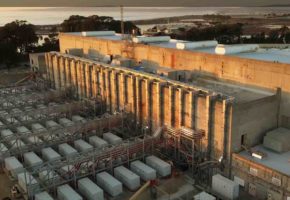The Capital battery – a key part of the decarbonisation plans of the national capital and its biggest storage facility to date – is finally charging and injecting power into the grid, albeit at small quantities, after nearly a year of commissioning delays.
The 100 MW/200 MWh Capital battery is owned by Neoen Australia and was due to be operational in the first half of 2023.
Construction of the battery, located near the Queanbeyan sub-station, was finished early last year, and EPC contractor Doosan Gridtech posted images of the facility – using CATL technology – in March, 2023, saying it should be commissioned by June.
But that didn’t happen. Some initial injections were made into the grid in July last year (reported by Watt Clarity), but RenewEconomy understands this only identified problems that are only now being resolved by the contractor.
“The Capital battery commissioning is now expected in 2024,” Neoen CEO Xavier Barbaro told investors in a conference call last November. “The connection compliance tests under the direct responsibility of the EPC contractor are taking much more time than initially expected.”
This week there have been signs of movement, with periodic charging and injections into the grid, often at negligible amounts and never more than 5MW, indicating the facility may be going through the final compliance tests before working through its first “hold point” in the commissioning process.
Neoen has been the most successful battery storage developer in Australia, responsible for the original Tesla big battery at Hornsdale that was built, and commissioned, in less than 100 days.
Since then it has added the Victoria Big Battery, still the country’s biggest at 300 MW and 450 MWh, and the small Bulgana battery, and is building the Blyth, Western Downs, and Collie batteries, as well as Capital, with other projects in the pipeline.
Neoen committed to building the Capital big battery in Canberra as part of the tender win in 2020 with the ACT government that also underwrote the construction of the 412 MW first stage of the Goyder wind farm in South Australia.
The ACT has already reached its target of net 100 per cent renewables, but is now expanding its renewable plans and boosting its local grid reliability as it seeks to electrify homes, business and transport, all of which will require more green energy.
The original plan for the Capital battery was to build a 50 MW/100 MWh battery, but Neoen doubled the size after signing a seven-year 70 MW “virtual battery contract” with AGL Energy, which will allow the electricity retailer to hedge its customer load by virtually charging or discharging the battery.
Delays in connections have reached plague proportions in the Australian renewables and storage industry, although details are often scarce.
The problems are various cited as a lack of resources, complexity, faulty equipment, incorrect installations or other problems, such as the need for so called “harmonic filters.”
The industry and market operators have been working to improve the process, and state and federal government have allocated funds to boost resources.
It was interesting to see that the 850 MW, 1680 MWh Waratah super battery, country’s biggest battery project – and biggest single unit to be ever connected to the Australian grid – has already received its full connection agreement known as a GPS. It will be critical for reliability if and when the Eraring coal generator is closed.
Neoen will be protected from any losses from the Capital battery delays by what are known as “liquiditated damages”, usually sheeted home to contractors when projects are not fully completed on schedule.
“It is not especially making us nervous, we do have some comfort in the level of liquiditated damages we have in place because that is in the price that we pay for the EPC contract,” Barbaro said in the investor call last November.
B










